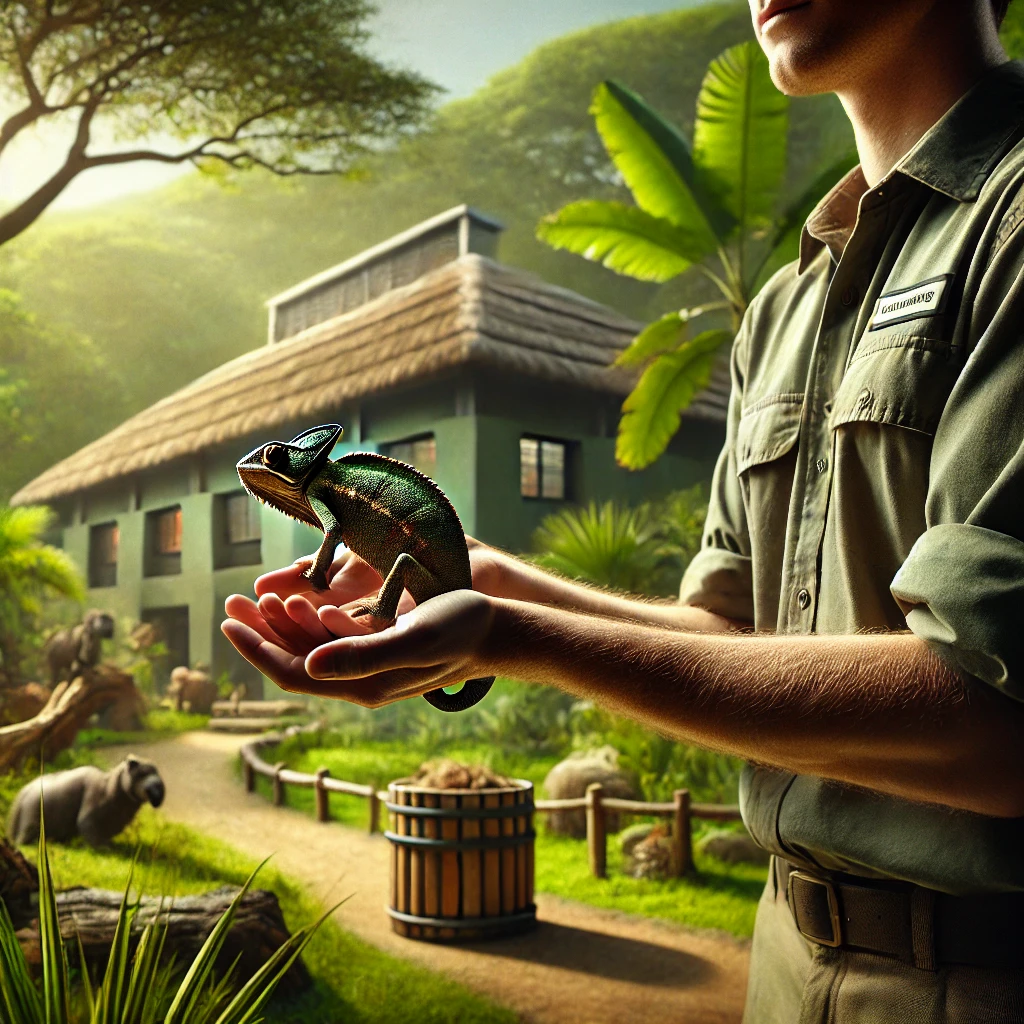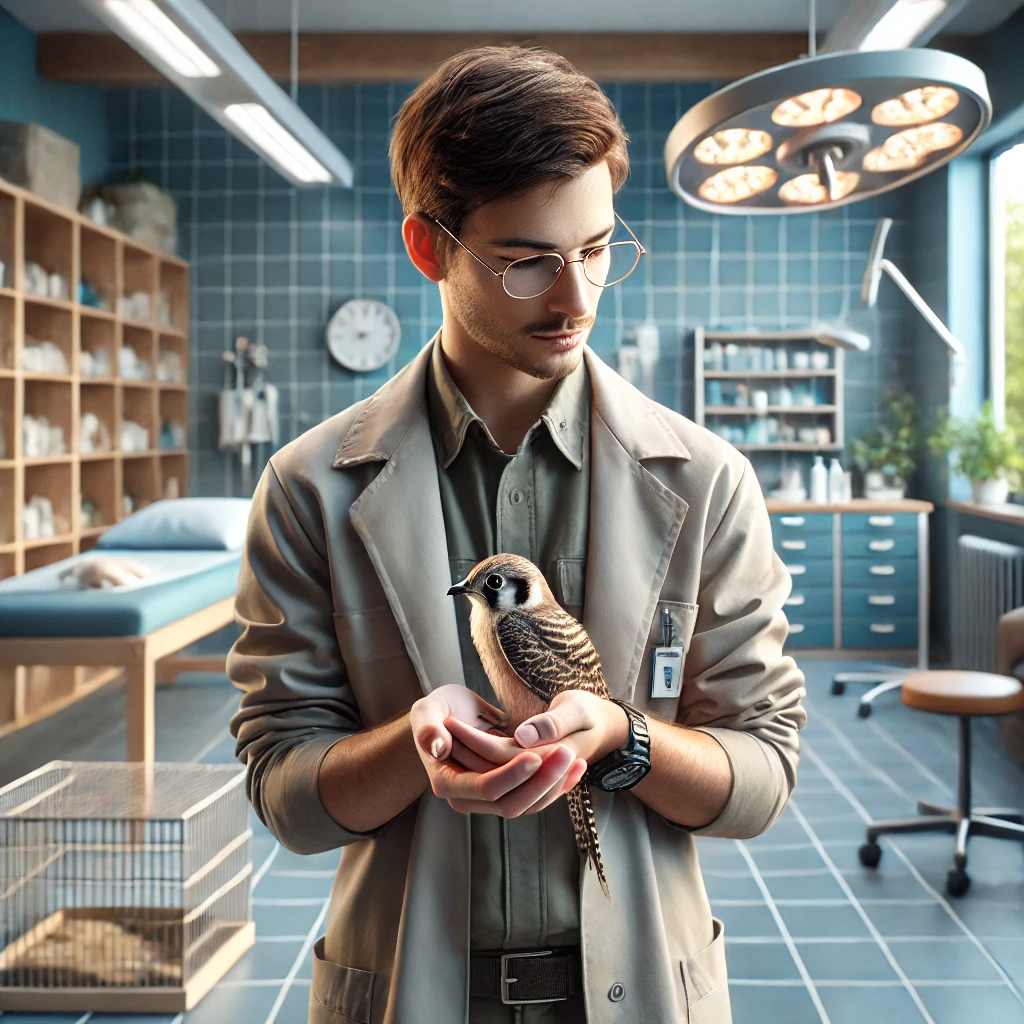Let’s face it, folks – when most of us think about zoos and aquariums, our minds immediately conjure up images of family outings, excited kids pressing their noses against glass enclosures, and maybe that one time you got a little too close to the monkey exhibit and, well… let’s just say you learned a valuable lesson about primate behavior. But hold onto your safari hats, because these institutions are so much more than just places to gawk at animals and buy overpriced souvenirs. They’re actually on the frontlines of conservation efforts, working tirelessly to protect endangered species and educate the public about the importance of biodiversity. So, grab your imaginary binoculars, and let’s dive into the fascinating world of zoos and aquariums – where conservation meets education, and maybe, just maybe, you’ll leave without any monkey-related mishaps.
The Evolution of Zoos and Aquariums: From Menageries to Conservation Powerhouses
A Brief History Lesson (Don’t Worry, It’s Not Boring)
Once upon a time, in a land not so far away, zoos were little more than glorified menageries – collections of exotic animals kept for the amusement of the wealthy and powerful. Picture a bunch of stuffy aristocrats sipping tea while gawking at a confused giraffe, and you’ve got the general idea. But fear not, dear reader, for times have changed, and zoos have undergone a transformation more dramatic than a butterfly emerging from its cocoon (which, coincidentally, you can probably witness at your local butterfly garden).
Today’s zoos and aquariums have evolved into complex institutions that play a crucial role in wildlife conservation, scientific research, and public education. They’ve traded in their top hats and monocles for lab coats and clipboards, focusing on the welfare of animals and the preservation of endangered species. It’s like they’ve gone from being the class clowns of the animal world to the valedictorians – still fun to be around, but with a whole lot more substance.
The Modern Zoo: More Than Just a Pretty Face
Modern zoos and aquariums are like the Swiss Army knives of the conservation world – they’re versatile, multifaceted, and always ready to tackle a challenge. These institutions now serve as hubs for research, breeding programs, and public education, all while providing a safe haven for animals that might otherwise be struggling to survive in the wild. It’s like they’re running a combination hotel, research facility, and matchmaking service for endangered species. Talk about multitasking!
But it’s not all serious business – these places still know how to have fun. They’ve mastered the art of edutainment, blending education and entertainment in a way that makes learning about conservation as enjoyable as watching a penguin waddle (which, let’s be honest, is pretty darn enjoyable). So the next time you visit a zoo or aquarium, remember that you’re not just there for the cute animal pics – you’re participating in a global effort to protect our planet’s biodiversity. Just try not to let that go to your head, okay?
Conservation Breeding Programs: Playing Cupid for Endangered Species
Love in the Time of Conservation
Imagine being a matchmaker for some of the world’s rarest animals. That’s essentially what zoos and aquariums do with their conservation breeding programs. These initiatives are like a dating service for endangered species, minus the awkward small talk and overpriced drinks. Instead of swiping right on Tinder, these programs use complex genetic analyses and behavioral studies to pair up compatible animals and increase the chances of successful reproduction.
But it’s not just about playing Cupid. These breeding programs are often the last line of defense for species on the brink of extinction. They’re like Noah’s Ark, but with better funding and more scientific backing. Through careful management and coordination between institutions worldwide, zoos and aquariums have been able to bring several species back from the brink of extinction. It’s like they’re giving Mother Nature a helping hand – or in some cases, a full-on bear hug.
Success Stories: When Conservation Gets Its Happy Ending
Let’s take a moment to celebrate some of the conservation breeding program success stories. These are the feel-good tales that make all the hard work worthwhile – the animal kingdom equivalent of a rom-com happy ending.
| Species | Conservation Status Before Breeding Program | Current Status |
|---|---|---|
| California Condor | 22 individuals in 1982 | Over 400 individuals as of 2020 |
| Golden Lion Tamarin | Fewer than 200 in the wild in the 1970s | Over 2,500 in the wild as of 2020 |
| Arabian Oryx | Extinct in the wild in 1972 | Over 1,000 in the wild as of 2020 |
| Black-footed Ferret | Thought to be extinct in 1979 | Over 300 in the wild as of 2020 |
These success stories are like the animal kingdom’s version of “The Comeback Kid.” They prove that with a little hard work, dedication, and maybe a dash of animal magnetism, we can make a real difference in the fight against extinction. So the next time you see a California Condor soaring majestically through the sky, remember – it might just owe its existence to a zoo’s breeding program. Talk about a bird’s eye view of conservation success!
Research and Scientific Contributions: Where the Wild Things Are… Studied
Lab Coats and Leopard Spots: The Science Behind Conservation
Zoos and aquariums aren’t just about feeding time and gift shops (though let’s be honest, those are pretty great too). These institutions are also at the forefront of scientific research, conducting studies that help us better understand and protect wildlife. It’s like having a living, breathing laboratory right in your backyard – minus the risk of accidentally creating a dinosaur theme park gone wrong.
From studying animal behavior to developing new conservation techniques, zoos and aquariums are constantly pushing the boundaries of what we know about the natural world. They’re like the Indiana Joneses of the animal kingdom, always on the hunt for new discoveries (but with fewer booby traps and more peer-reviewed journals).
From Zoo to You: How Research Benefits Wildlife and Humans
The research conducted at zoos and aquariums doesn’t just benefit the animals within their walls – it has far-reaching implications for wildlife conservation and even human health. Here’s a quick rundown of some of the ways this research is making a difference:
- Improving animal welfare: By studying animals in controlled environments, researchers can develop better care practices for both captive and wild animals.
- Developing conservation strategies: Research helps identify threats to wild populations and develop effective conservation plans.
- Advancing veterinary medicine: Treatments developed for zoo animals often have applications in domestic animal care and even human medicine.
- Understanding ecosystem health: Studying diverse species helps us better understand the complex relationships within ecosystems.
- Climate change research: Many zoos and aquariums are at the forefront of studying how climate change affects different species.
It’s like these institutions are the unsung heroes of the scientific world – quietly working behind the scenes to save the planet, one research paper at a time. So the next time you see a zookeeper scribbling notes while watching a gorilla, just remember – they might be on the verge of a breakthrough that could change the world. No pressure, right?
Education and Public Engagement: Turning Zoo Visitors into Conservation Champions
From “Ooh” and “Aah” to “Let’s Save the Planet!”
Let’s face it – most people don’t visit zoos and aquariums with the primary goal of becoming passionate conservationists. They’re usually more interested in seeing cute animals, taking selfies with exotic backdrops, and maybe indulging in an overpriced ice cream cone. But here’s where zoos and aquariums pull off their magic trick: they take that initial “wow” factor and transform it into genuine concern for wildlife and the environment.
It’s like they’re secret agents of conservation, stealthily planting the seeds of environmental awareness while you’re distracted by the antics of playful otters or majestic elephants. Before you know it, you’ve gone from casually observing animals to signing up for a beach clean-up and donating to wildlife conservation funds. Talk about a plot twist!
Edutainment: Where Learning Meets Fun (and Nobody Falls Asleep)
Zoos and aquariums have mastered the art of edutainment – that perfect blend of education and entertainment that keeps visitors engaged without making them feel like they’re back in school. It’s like they’ve found the secret recipe for making learning fun, and it doesn’t even involve hiding vegetables in dessert.
Here are some of the clever ways zoos and aquariums sneak education into your visit:
- Interactive exhibits: Hands-on displays that let visitors experience aspects of animal life or conservation work firsthand.
- Keeper talks: Informative (and often humorous) presentations that share interesting facts about animals and their conservation needs.
- Behind-the-scenes tours: Exclusive looks at animal care and conservation work that make visitors feel like VIPs (Very Important Protectors of wildlife).
- Citizen science programs: Opportunities for visitors to contribute to real scientific research, making them feel like part of the team.
- Conservation-themed events: Fun activities that highlight conservation issues and inspire action, like “Party for the Planet” celebrations.
These educational initiatives are like the Trojan horse of conservation – they slip important messages into your brain while you’re having too much fun to notice. Before you know it, you’re spouting facts about sea turtle nesting habits at dinner parties and organizing neighborhood recycling drives. Congratulations, you’ve been officially edu-tained!
Habitat Protection and Restoration: Bringing the Zoo to the Wild (and Vice Versa)
When Zoos Go Wild: Taking Conservation Beyond the Gates
You might think that zoos and aquariums are all about keeping animals in, but these days, they’re just as focused on getting out there and protecting habitats in the wild. It’s like they’ve decided to expand their real estate portfolio, but instead of buying condos, they’re preserving critical ecosystems around the globe.
Many zoos and aquariums are now directly involved in habitat protection and restoration projects, both locally and internationally. They’re like the caped crusaders of the conservation world, swooping in to save endangered habitats from destruction. Only instead of bat caves, they have research stations, and their superpowers involve things like reforestation and sustainable agriculture practices.
From Concrete Jungle to Actual Jungle: Success Stories in Habitat Conservation
Let’s take a look at some of the impressive habitat conservation projects that zoos and aquariums have been involved in:
| Zoo/Aquarium | Project | Impact |
|---|---|---|
| San Diego Zoo | Cloud Forest Restoration in Ecuador | Over 100,000 trees planted as of 2020 |
| Bronx Zoo | Tiger Conservation in Russian Far East | Protected over 1 million acres of tiger habitat |
| Melbourne Zoo | Mountain Pygmy Possum Recovery | Restored critical habitat and increased wild population |
| Monterey Bay Aquarium | Sea Otter Conservation | Helped recover California sea otter population |
These projects show that zoos and aquariums aren’t just talking the talk – they’re walking the walk, often in some pretty remote and challenging environments. It’s like they’ve taken the “think globally, act locally” mantra and cranked it up to eleven. So the next time you visit a zoo, remember that your admission fee might be helping to protect a slice of rainforest or save a tiger’s hunting grounds. Not a bad return on investment, if you ask me!
Challenges and Controversies: Because Nothing Worth Doing is Ever Easy
The Elephant in the Room: Addressing Animal Welfare Concerns
Now, we can’t talk about zoos and aquariums without addressing some of the controversies surrounding them. It’s like the awkward family dinner conversation of the conservation world – nobody really wants to bring it up, but it’s important to discuss.
One of the main criticisms of zoos and aquariums is the concern over animal welfare. Critics argue that keeping animals in captivity, especially large or highly intelligent species, can be detrimental to their physical and mental health. It’s a bit like trying to recreate the Amazon rainforest in your backyard – no matter how hard you try, it’s never going to be quite the same as the real thing.
Reputable zoos and aquariums are constantly working to improve their animal care practices, investing in larger and more naturalistic habitats, and prioritizing the physical and mental stimulation of their animals. It’s like they’re trying to create five-star hotels for their animal residents, complete with room service (aka enrichment activities) and spa treatments (aka veterinary care).
Balancing Act: Conservation vs. Captivity
Another challenge faced by zoos and aquariums is striking the right balance between their roles as conservation centers and their function as public attractions. It’s like trying to be both a serious scientist and a popular entertainer – not an easy feat, unless you’re Bill Nye the Science Guy.
On one hand, zoos and aquariums need to attract visitors to fund their conservation and research efforts. On the other hand, they need to ensure that their educational message isn’t lost in the entertainment aspect of the experience. It’s a delicate balancing act, like trying to juggle flaming torches while riding a unicycle – impressive when done right, but with potential for disaster if things go wrong.
To address these challenges, many zoos and aquariums are:
- Increasing transparency about their conservation efforts
- Improving visitor education programs
- Collaborating with animal welfare experts
- Participating in global conservation initiatives
- Continuously updating and improving animal habitats
It’s like they’re on a never-ending quest for self-improvement, constantly evolving to meet the changing expectations of the public and the needs of the animals in their care. So while challenges and controversies remain, many zoos and aquariums are working hard to address them head-on. It’s not always a perfect solution, but hey, Rome wasn’t built in a day, and neither was a perfect model for wildlife conservation.
The Future of Zoos and Aquariums: Crystal Ball Not Included
Adapting to a Changing World: Zoos and Aquariums 2.0
As we look to the future, it’s clear that zoos and aquariums will need to continue evolving to stay relevant and effective in their conservation efforts. It’s like they’re playing a never-ending game of adaptation, constantly changing their strategies to keep up with new challenges and opportunities.
Some of the trends we’re likely to see in the coming years include:
- Increased use of technology: From virtual reality experiences to AI-powered conservation tools, technology will play a bigger role in how zoos and aquariums operate and engage with visitors.
- Greater focus on local species: While exotic animals will always be a draw, many institutions are placing more emphasis on conserving and showcasing local wildlife.
- Expanded in-situ conservation efforts: Expect to see more zoos and aquariums directly involved in protecting habitats and species in the wild.
- Enhanced visitor experiences: Immersive exhibits and interactive learning opportunities will become increasingly common, making visits more engaging and memorable.
- Stronger partnerships: Collaboration between zoos, aquariums, and other conservation organizations will become even more crucial in tackling global environmental challenges.
It’s like these institutions are gearing up for a conservation Olympics, training hard to face whatever challenges the future might bring. Let’s just hope they don’t have to compete in synchronized swimming with the penguins – that could get messy.
The Role of Public Support: You’re Part of the Team!
As zoos and aquariums continue to evolve, one thing remains constant: the importance of public support. That’s right, folks – you’re not just spectators in this conservation game, you’re key players!
By visiting zoos and aquariums, supporting their conservation initiatives, and spreading awareness about wildlife protection, you’re contributing to the global effort to preserve biodiversity. It’s like you’re part of a worldwide conservation flash mob, each person playing a small but crucial role in the bigger picture.
So the next time you visit a zoo or aquarium, remember that you’re not just there for the cute animal photos (although those are definitely a perk). You’re participating in a global movement to protect our planet’s incredible biodiversity. Just try not to let it go to your head – we can’t all be David Attenborough, but we can all do our part to make a difference.
In conclusion, zoos and aquariums have come a long way from their origins as mere entertainment venues. Today, they stand as vital centers of conservation, research, and education, playing a crucial role in protecting endangered species and preserving biodiversity. While challenges remain, these institutions continue to adapt and evolve, striving to create a better future for wildlife and for us all.
So go ahead, plan that trip to the zoo or aquarium. Just remember – you’re not just visiting, you’re joining a global conservation effort. And who knows? You might just leave with a newfound passion for saving the planet… and maybe a stuffed animal or two from the gift shop. After all, who can resist a plush penguin?
*Disclaimer: This blog post is based on information available up to 2020. While we strive for accuracy, the world of conservation is constantly evolving. If you spot any inaccuracies or have updated information, please let us know so we can keep our content as current and correct as possible. Together, we can ensure that the information about wildlife conservation remains as




